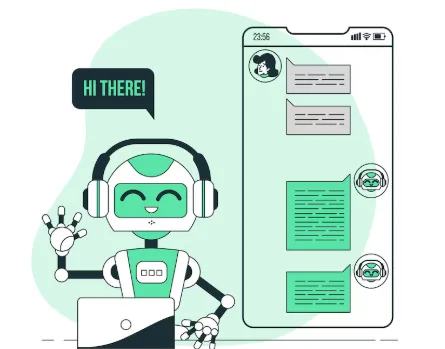Conversational Commerce in Shopify: The Ultimate Future of Online Shopping Is Here 25

Table of Contents
Discover how to use conversational commerce in Shopify to boost sales, offer 24/7 support, and improve customer experience with AI chatbots, NLP, and live messaging tools.
Ever landed on an online store and wished you could just ask someone a quick question about that product you’re eyeing? That’s exactly where conversational commerce comes in—and if you’re running a Shopify store, it might be the game-changer you need in 2025.
I recently implemented conversational commerce tools on my own Shopify store and saw my conversion rates jump by 28% in just two months. Let me walk you through everything I’ve learned so you can achieve similar results.
What is Conversational Commerce?
Conversational commerce simply means letting your customers shop through chat. Instead of silently browsing your site, they can message you on WhatsApp, Facebook, Instagram, or through a chat window on your website to ask questions, get recommendations, and even complete their purchase.
It’s like having a friendly, knowledgeable sales associate available 24/7—only it’s happening digitally.
You’ve probably experienced this yourself as a shopper when you:
- Asked a brand on Instagram if they have your size in stock
- Used a website chat to ask about shipping times
- Received a WhatsApp message about your order status
- Used a voice assistant to reorder something
These are all examples of conversational commerce in action, and they’re transforming how we shop online.
Why Your Shopify Store Needs This Now (Not Later)

Let’s be honest—every year someone tells you about the “next big thing” in e-commerce. So why should you care about conversational commerce? Because the numbers speak for themselves:
- Customers who engage through chat are 3-4x more likely to buy something
- 70% of us millennials and Gen Z shoppers prefer messaging over picking up the phone
- Your competitors are likely already implementing this (or will be soon)
When I added a simple chat widget to my product pages, I immediately noticed customers asking questions they would have otherwise just left the site to research. Each question I answered in chat was a potential abandoned cart prevented.
Plus, with iOS privacy changes making your Facebook ads more expensive and less effective, conversational commerce gives you a direct channel to communicate with customers that doesn’t rely on third-party data.
How Conversational Commerce Works in Shopify

You don’t need to be a tech wizard to implement conversational commerce. Here’s what’s happening behind the scenes:
When a customer types a message like “Do you have this in blue?”, natural language processing (NLP) technology understands what they’re asking. The system identifies their intent (checking color availability) and then either provides an automated response or routes the question to your team.
The magic happens when this conversation connects directly to your Shopify store data—showing real-time inventory, customer history, and enabling purchases without leaving the chat.
Top Shopify Apps for Conversational Commerce
I’ve tested dozens of apps and these are the ones that delivered the best results for different needs:
- For Beginners Just Starting Out:
Shopify Inbox: It’s free, built by Shopify, and integrates with your store in minutes. It gives you live chat and connects with Instagram and Facebook Messenger. Perfect if you’re testing the waters.
- For Growing Stores Ready to Scale:
Tidio: Their visual chatbot builder is incredibly intuitive, and you can create automated flows for common questions without any coding. Their free plan is generous, and paid plans start at just $18/month.
- For Established Brands Handling Volume:
Gorgias: If you’re processing hundreds of orders and need a robust solution that handles support tickets, live chat, and social media in one place, Gorgias is worth the investment.
- For Social Media-Focused Brands:
ManyChat: If most of your sales come through Instagram and Facebook, ManyChat’s automation tools can transform your social media comments and DMs into sales conversations.
| Tool | Strengths | Best For |
|---|---|---|
| Shopify Inbox | Free, native, easy setup, integrates with Shop app, Instagram, and Messenger | Small to mid-sized stores |
| Tidio | Live chat + AI chatbot with simplified customer interactions | Scaling brands |
| Gorgias | Multichannel support with deep automation | Large teams, complex stores |
| ManyChat | Messenger/Instagram automation | Social-first brands |
| Heyday | AI + human hybrid with Shopify sync | Growth-focused DTC brands |
| Desku | AI-driven automation, affordable pricing options | SMBs looking for intuitive support solutions |
| Chatfuel | No-code bot builder for Facebook Messenger | Brands focusing on market reach via Facebook |
| Nurix AI | Reduces response times by up to 36% | Businesses wanting to free up their team |
| Relish AI | Data-driven personalized shopping experiences | Brands focusing on intelligent recommendations |
| Gobot | Interactive quizzes and feedback collection | Stores wanting personalized shopping assistance |
Examples of Conversational Commerce in Action Fashion Store:
What convinced me was seeing how other stores use conversational commerce to solve real problems:
Example #1: The Fashion Store That Reduced Returns by 28%
A clothing brand I follow implemented a sizing assistant chatbot that asks customers about their height, weight, and fit preferences. By guiding customers to the right size through conversation, they dramatically reduced size-related returns.
Example #2: The Beauty Brand That Increased AOV by 35%
Instead of hoping customers would browse related products, this brand used their chat to offer personalized skincare regimens based on customers’ specific concerns. By recommending complementary products in conversation, their average order value jumped significantly.
Example #3: The Small Pet Supply Store That Competed With Amazon
With just three employees, this local pet supply store used Instagram DM automation to create pet profiles and send personalized food recommendations and reorder reminders. They now retain customers at a rate that puts Amazon to shame—all through personalized conversations.
How to Add Conversational Commerce to Your Shopify Store

Let me walk you through exactly how to implement this on your Shopify store:
1. Start With Basic Live Chat
The easiest way to begin is with live chat on your website:
- Install Shopify Inbox or Tidio from the app store (both have free options)
- Place your chat widget on high-intent pages (product pages and checkout)
- Set up an automated greeting: “Hey there! Have questions about anything you see? I’m here to help!”
- Create “away” messages for when you’re offline: “We’ll be back at 9am EST! Leave a message and we’ll respond first thing.”
Pro tip: Even if you can only respond during business hours, having the chat widget available 24/7 to collect questions will capture leads you would otherwise lose.
2. Add Some Smart Automation
You don’t need to hire a developer to create basic chatbot flows. Here’s what worked for me:
- Identify your 5 most frequently asked questions (check your emails and DMs)
- Create automated responses for each
- Build simple decision trees (if customer asks X, show options A, B, or C)
- Always include an escape hatch (“Need to speak with a human? Click here”)
Start simple with automations for:
- Checking order status (“Can you tell me your order number?”)
- Answering shipping questions
- Helping with product selection through a few targeted questions
- Providing basic sizing or compatibility information
3. Connect Your Social Messaging
Once you’ve mastered on-site chat, expand to where your customers already are:
- Connect Instagram to Shopify Inbox to manage DMs directly
- Set up a business WhatsApp account through a provider like MessageBird
- Create templates for common scenarios like:
- Abandoned cart reminders
- Order confirmations
- Shipping updates
- Back-in-stock notifications
When I connected WhatsApp to my store, I was shocked at how many customers preferred communicating there versus email—and how much higher the open and response rates were.
4. Use Customer Data to Personalize Conversations
The real power comes when you personalize conversations based on customer data:
- Connect your chat tool to your customer database
- Create different conversation flows for:
- First-time visitors vs. returning customers
- Customers who previously purchased specific categories
- High-value customers vs. browsers
Your returning customers will be impressed when your chat knows their preferences without them having to repeat themselves.
5. Train Your Team (Even If Your Team Is Just You)
If you’re handling chat yourself or have team members helping, remember this isn’t just customer service—it’s sales:
- Learn to recommend related products naturally in conversation
- Create templates for common product recommendations
- Use scarcity and urgency appropriately (“We only have 3 left in that size!”)
- Practice transitioning from answering questions to closing sales
When I train my team, I emphasize that every chat is an opportunity to exceed expectations, not just answer questions.
Quick Tips That Made a Big Difference for Me
These small tweaks had a surprisingly big impact on my conversational commerce success:
- Use emojis and casual language: Keep conversations friendly and human, even in automated responses
- Send photos directly in chat: Show product variations or how-to images without making customers click away
- Follow up abandoned chats: If someone starts a conversation and disappears, a gentle follow-up 2 hours later converts surprisingly well
- Create exclusive chat-only offers: Give special discount codes only in chat to encourage engagement
- Ask for feedback after purchase: A simple “How are you enjoying your new [product]?” message 5 days after delivery often leads to reviews and repeat purchases
How This Helps Your SEO
One unexpected benefit I discovered was the SEO advantage. By adding a conversational FAQ widget to my product pages, I saw:
- Increased time on site (Google notices when visitors engage instead of bouncing)
- More long-tail keyword rankings (from questions customers actually ask)
- Improved schema implementation through FAQ markup
- Better mobile engagement metrics
Google increasingly favors sites that answer user questions directly, and conversational interfaces are perfect for this.
The Benefits You’ll Actually Notice
After implementing conversational commerce on my Shopify store, here’s what changed:
- Higher Conversion Rate: Questions that would have led to abandoned carts now lead to sales
- Larger Average Orders: It’s natural to recommend complementary products in conversation
- Fewer Support Tickets: Common questions get answered immediately through automation
- Better Customer Insights: You’ll learn exactly what concerns prevent purchases
- Stronger Customer Relationships: Conversations create connections that keep people coming back
My favorite unexpected benefit? Seeing exactly where my product descriptions were failing to address common questions, and fixing them to prevent future confusion.
FAQs
What’s the difference between live chat and conversational commerce?
Live chat is just one-way real-time communication. Conversational commerce includes chatbots, voice assistants, AI recommendations, and even order management—automating much of the process.
Do I need to code to set up conversational commerce?
Nope! Most Shopify apps have drag-and-drop builders and templates for common conversations like shipping updates, product help, and order returns.
Will chatbots replace human support?
Not entirely. Chatbots handle basic queries, while complex or emotional concerns still benefit from human touch. A hybrid model works best.
Is it expensive to set up?
Most apps have freemium models—you can get started at low cost and scale as your store grows.
Final Thoughts
Conversational commerce isn’t the future—it’s now. In a world where attention spans are short and expectations are high, Shopify merchants who embrace real-time, intelligent conversations will dominate the competition.
By 2025, conversational commerce will be a key component of any serious ecommerce strategy, with generative AI reshaping how consumers shop and how brands connect with them. Early adopters will benefit from better customer experiences, higher sales, and stronger loyalty
So whether you’re a startup or scaling to seven figures, integrating conversational tools into your store can:
Cut customer support costs
Increase conversions
Build brand loyalty
Deliver 5-star experiences, every time
Don’t wait—start the conversation that leads to your next sale.
IF YOU REACH AT END, GO GIVE A LOOK AT blogs ON OUR MAIN website.
